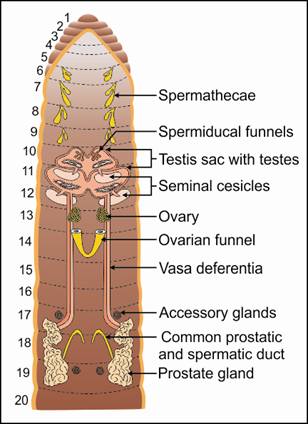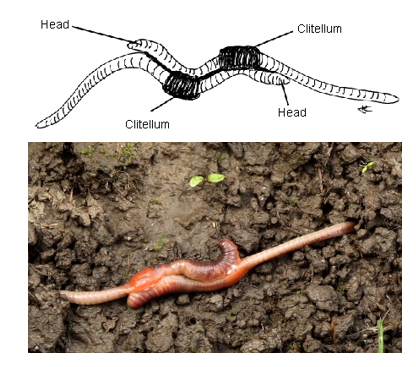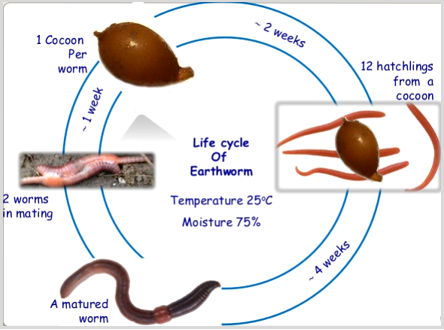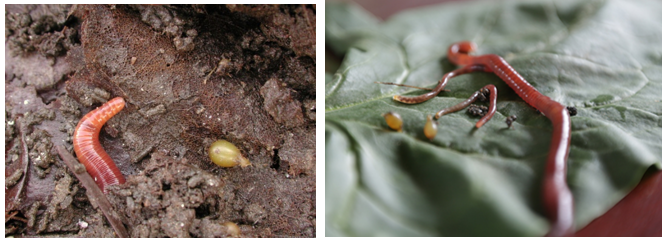Earthworms are hermaphrodites. Testis and ovary are present in the same individual.
Male reproductive organ
- Two pairs of testis are present in the 10th and 11th segments.
- The vas defferentia from the testis joins the prostatic duct in the 18th segment.
- Paired Accessory glands at present in the 17th and 19th segments.
- The prostate gland and the spermatic duct ‘vasa deferentia’ open into the exterior through a pair of male genital pores.
- Four pairs of spermathecae are found in the 6th – 9th segments.
- They receive and store spermatozoa during copulation.

Female reproductive organ
- A pair of ovaries is found near the septum between 12th and 13th segments.
- Just below the ovary, ovarian funnels present.
- They collect the eggs and transfer them to the oviduct which opens out to the female genital pore present on the ventral side of the 14th segment.
Fertilization
- Even though earthworms are hermaphrodites, cross fertilization is the most common means of sexual reproduction.
- Exchange of sperms occurs between two earthworms during mating.
- Packets of sperms called ‘spermatophores’ are transferred from one worm to another and vice versa.

- After this transfer, mature sperms, egg cells and some nutritive fluids are deposited in the cocoons formed by the glands cells of clitellum.
- Fertilization of egg takes place within this cocoon.

Development
- After 3 weeks the baby worms (2-20 in number) are released from the cocoon.
- The development is direct without any larval stage.
- Earthworms also have limited powers for re-generation.
